Sea Turtles. Family. Research. Iran. Amazing.
When scientists publish their pointy hat research papers in hard-to-read scientific journals, they are required to add something called Keywords – these are words that allow other scientists to find the papers easily when they do online searches. They are one or two-word descriptors of the work at hand.
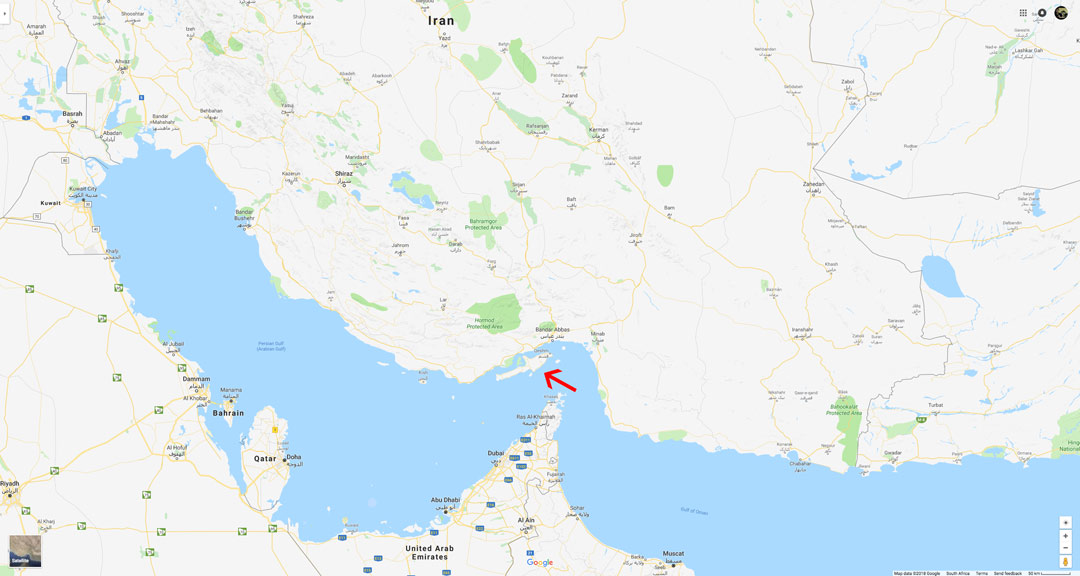
Map of Iran with the red arrow pointing to Qeshm (the big island just below Bandar Abbas.) Image © Google Maps
So the title of my blog today is the Keywords that best describe my recent trip to southern Iran – the island of Qeshm in fact, where I went to study sea turtles. The trip was amazing (keyword 🙂 as we found 136 turtles (another keyword 🙂 in just four days, and managed to do loads of research related to the impacts of climate change (there was another keyword in there :). Most importantly for me though, was that my Iranian colleagues all brought their wives (and one small child, Jana) along on the trip. It had a wonderful family (keyword 🙂 atmosphere. Lots of laughing; lots of fun; loads of love and friendship. It made for such a wonderful atmosphere. What a way to work….
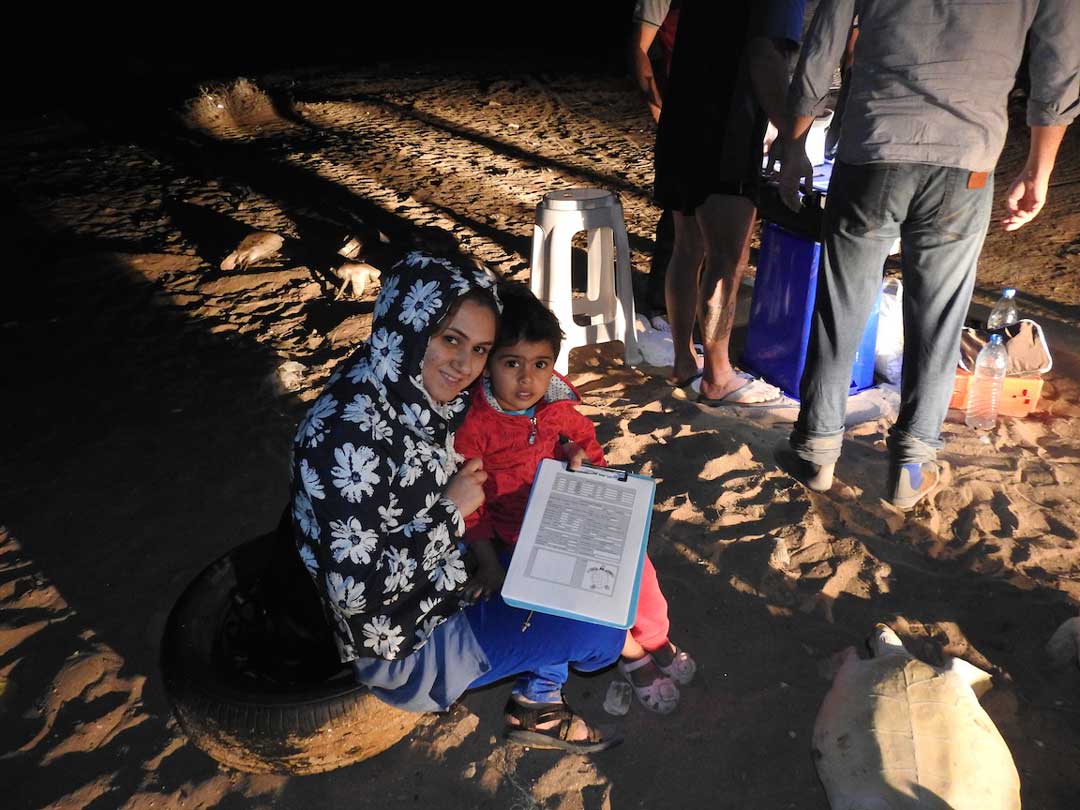
Photo © Nasrin Hejazi
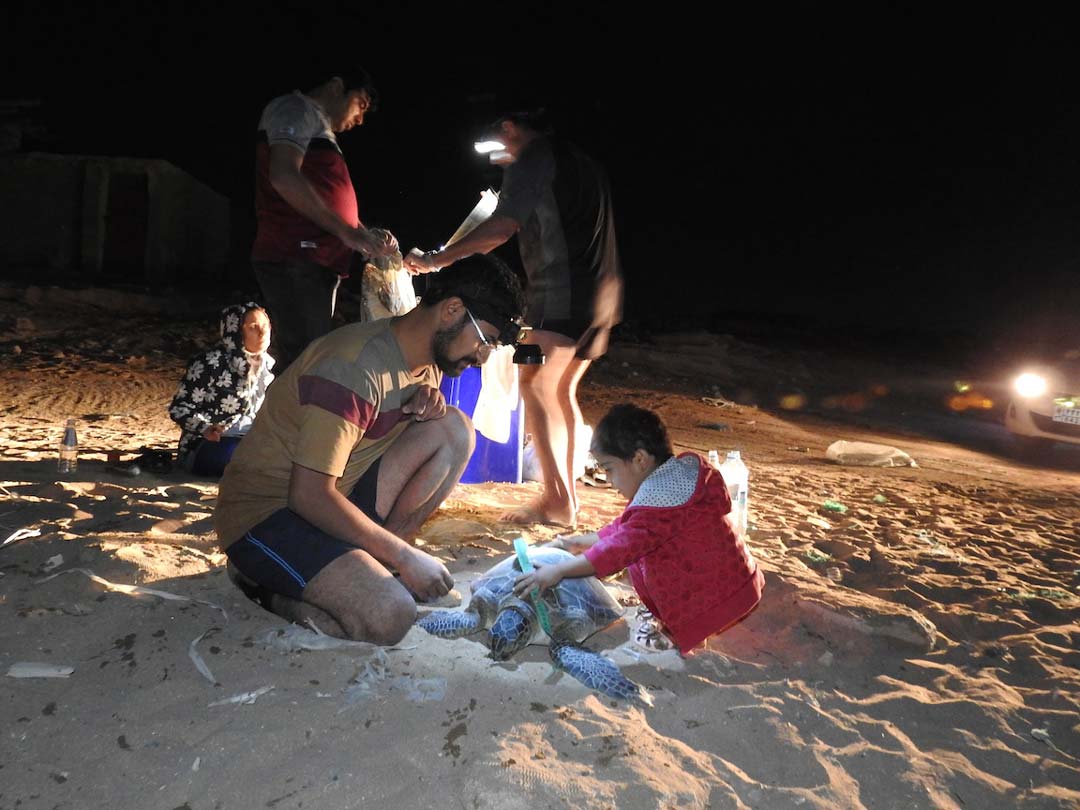
Photo © Nasrin Hejazi
You might be wondering what on earth I was doing in Iran? Well, it goes something like this: Sea turtles depend on temperature to produce male or female baby turtles. If the sand is warm when the eggs are incubating, then the nest will produce more females. Conversely, if the sand is cool, we will get more males. But then along comes climate change and a rapidly warming planet. Oh dear! What will happen to sea turtles? Will we get more females? Are turtles doomed? This is a growing concern amongst sea turtle scientists and conservationists.
But the Persian Gulf presents us with a wonderful opportunity to study impacts of climate change in the (turtle) flesh. It is a living laboratory of sorts… You see, the Gulf already experiences temperatures predicted for key turtle places like Florida and Australia in 50-100 years. So we can go there, look at turtles, and see if there are many more females than males. That would tell us a lot about how turtles cope with warmer climates – a bit like a window into the future – and help us figure out what we can do to help.
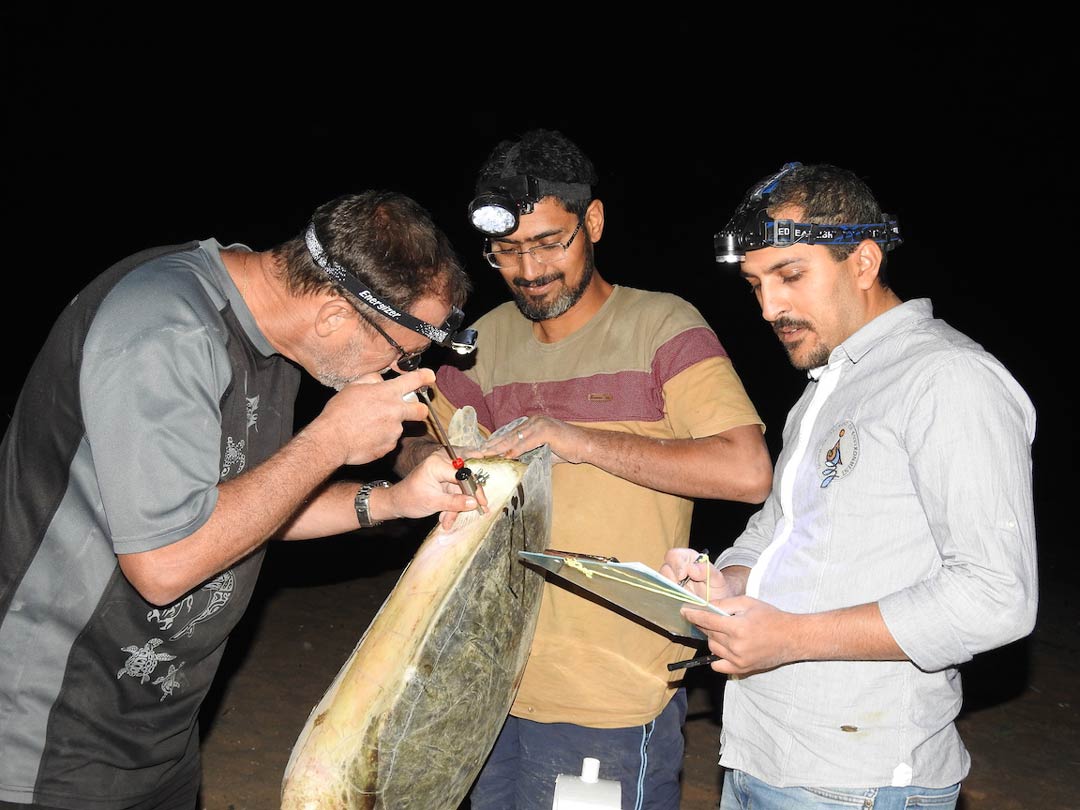
Photo © Nasrin Hejazi

Photo © Samira Parasiyee
Using a quick surgical procedure I can check and see if a turtle is a male or a female, and on Qeshm island there is a wonderfully lazy way to get to the turtles: The fishermen have built many arrow-head fish traps that also catch turtles. All we have to do is walk into the traps a low tide and pick them up. Easy! We caught (sorry – lazily picked up) 136 turtles in just four nights. They were all over the place, and it made things so easy for us.

Photo © Nicholas Pilcher
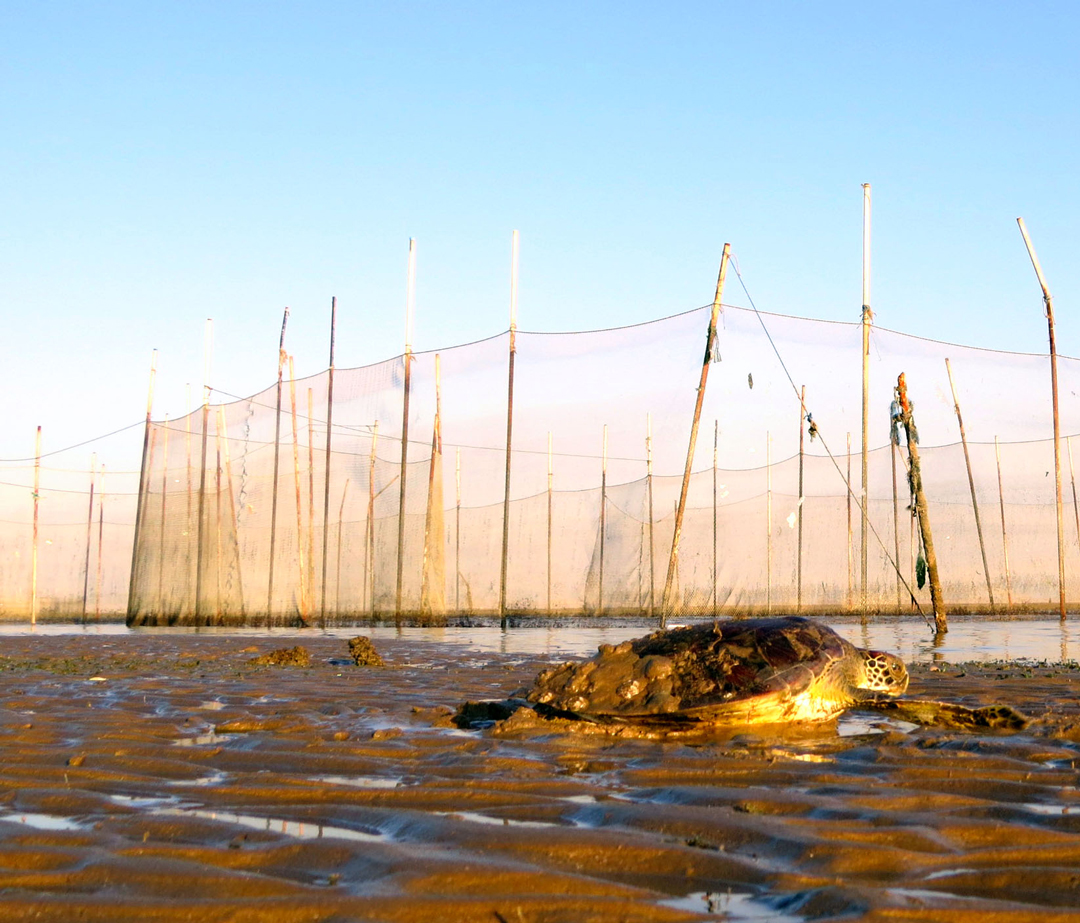
Photo © Nasrin Hejazi
So what did we find, you might be wondering….? Well, it is early days yet, but so far the data we have does not show a massive female bias. In other words, turtles are coping quite well with the higher regional temperatures. Of course, they have had 5000 years to get used to it, so maybe this is what turtles elsewhere will need, but it does tell us one important thing: turtles can cope with higher temperatures. What it does not yet tell us though, is how quickly they can adapt. More work for me… But more work with great friends and their families, in one of the most amazing locations ever: Qeshm island.
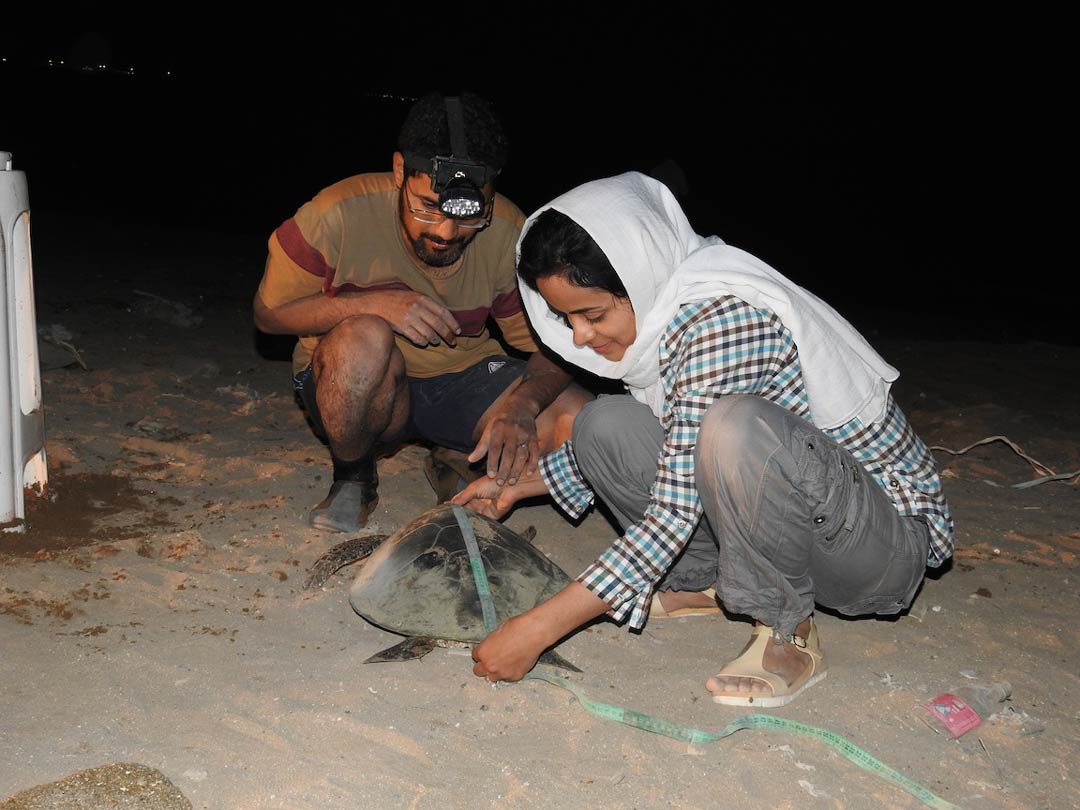
Photo © Samira Parasiyee
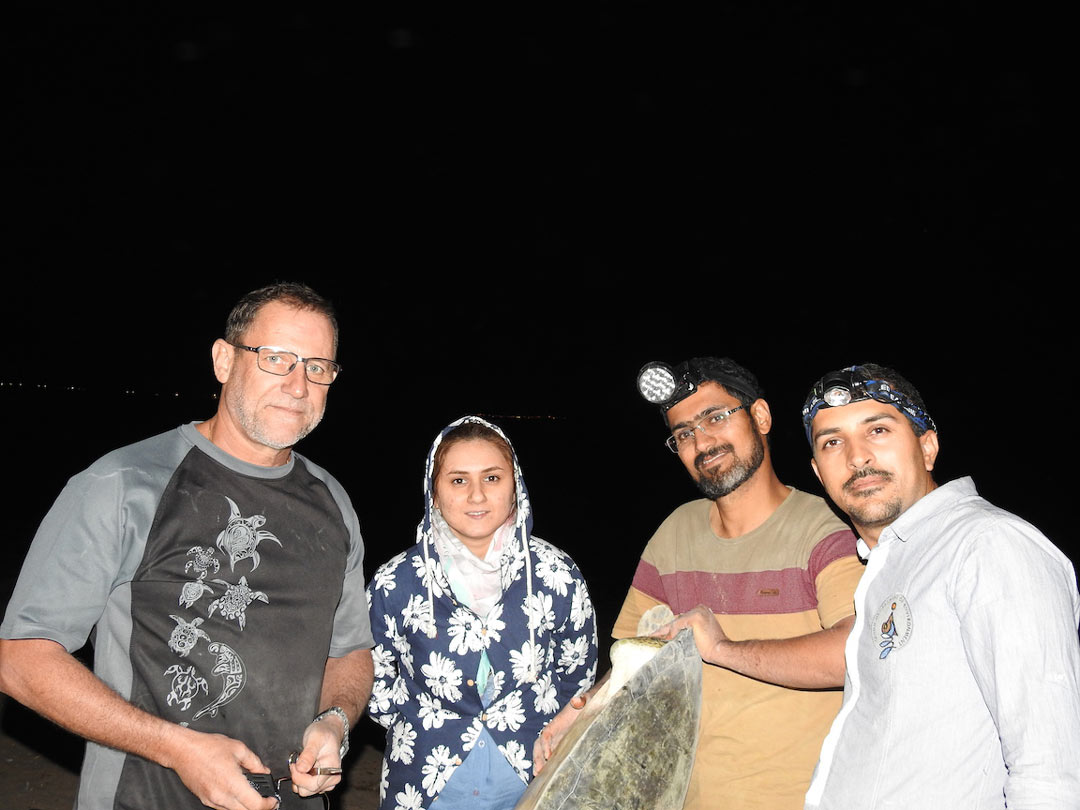
Photo © Nasrin Hejazi

Photo © Mohsen Rezaie-Atagholipour
Stay tuned for updates ☺
